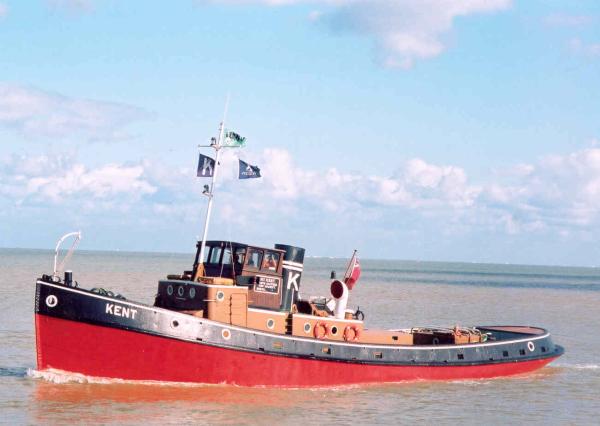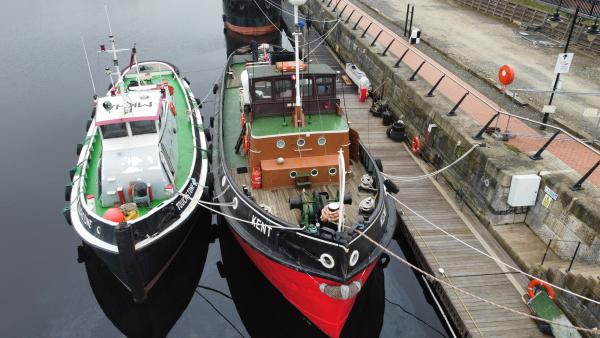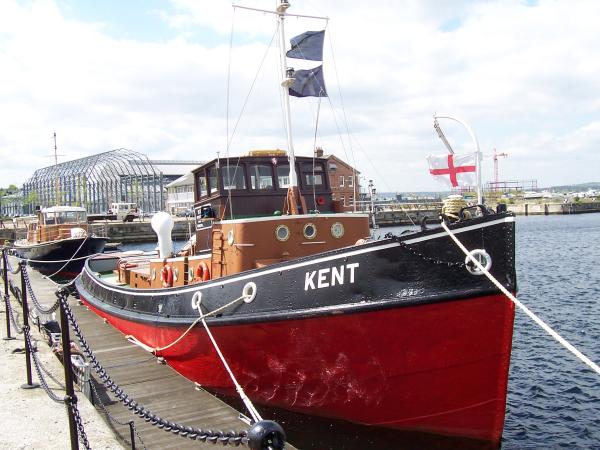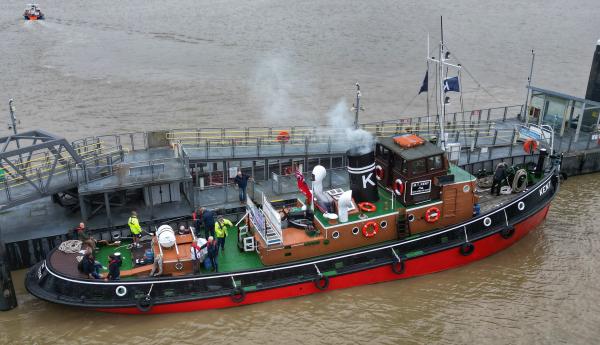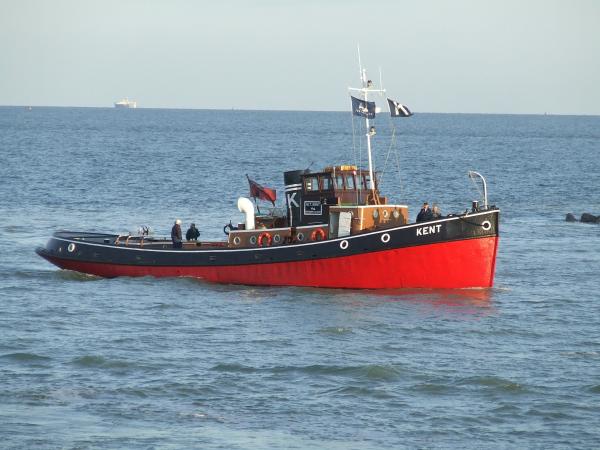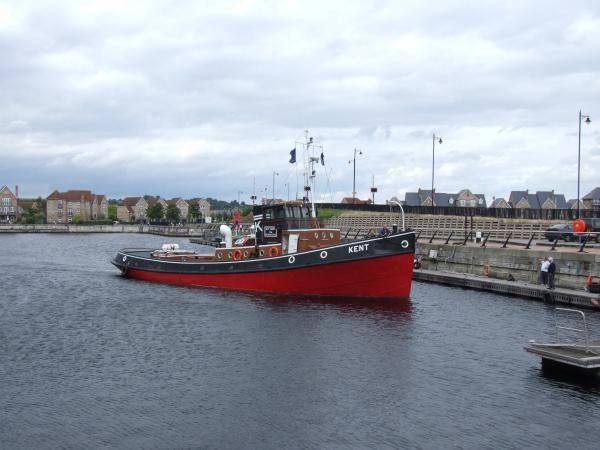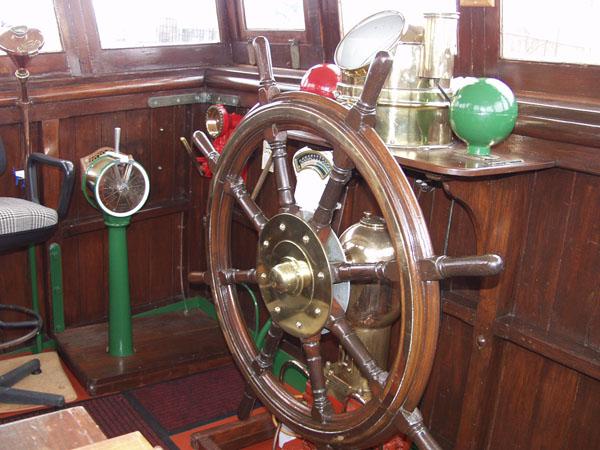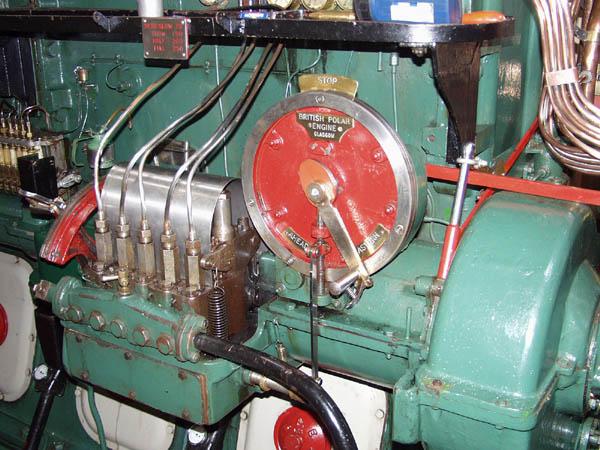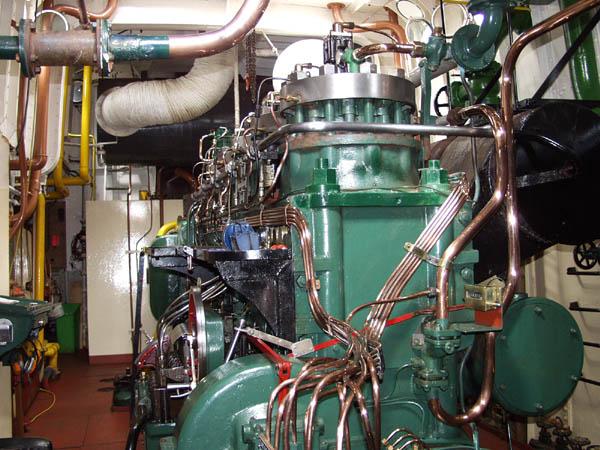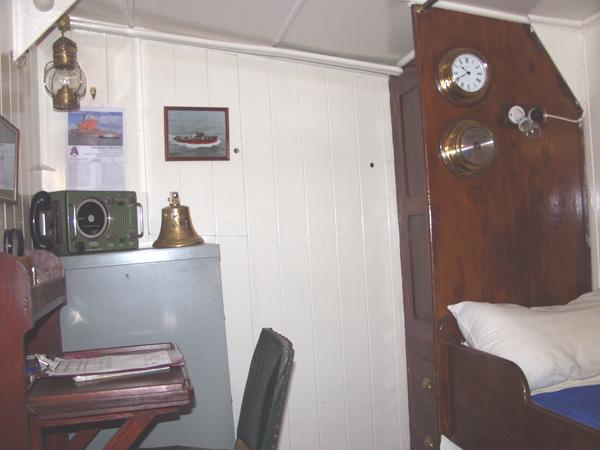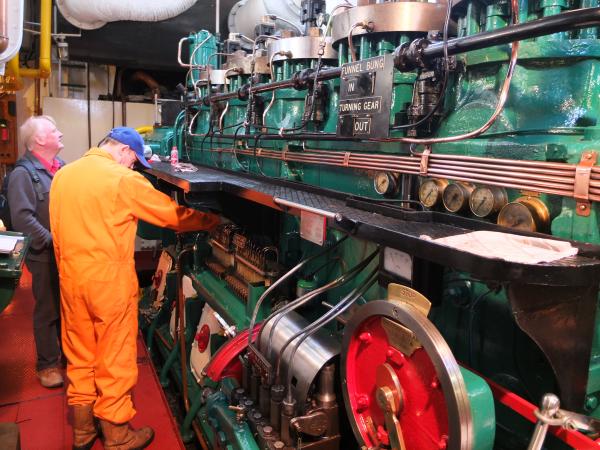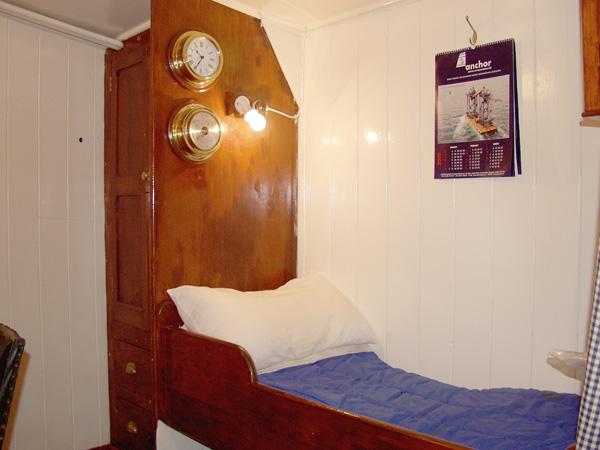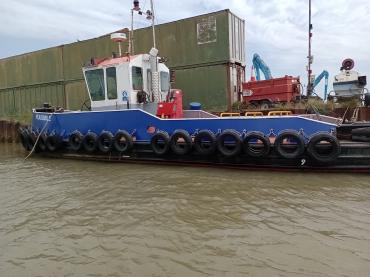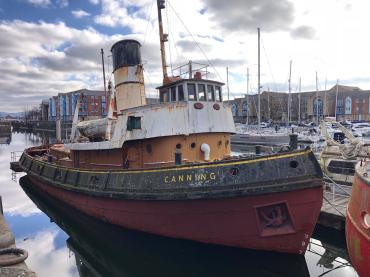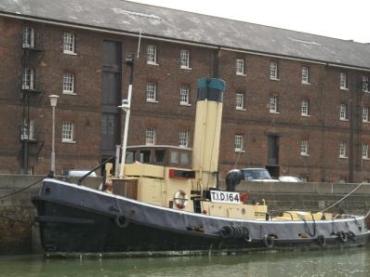

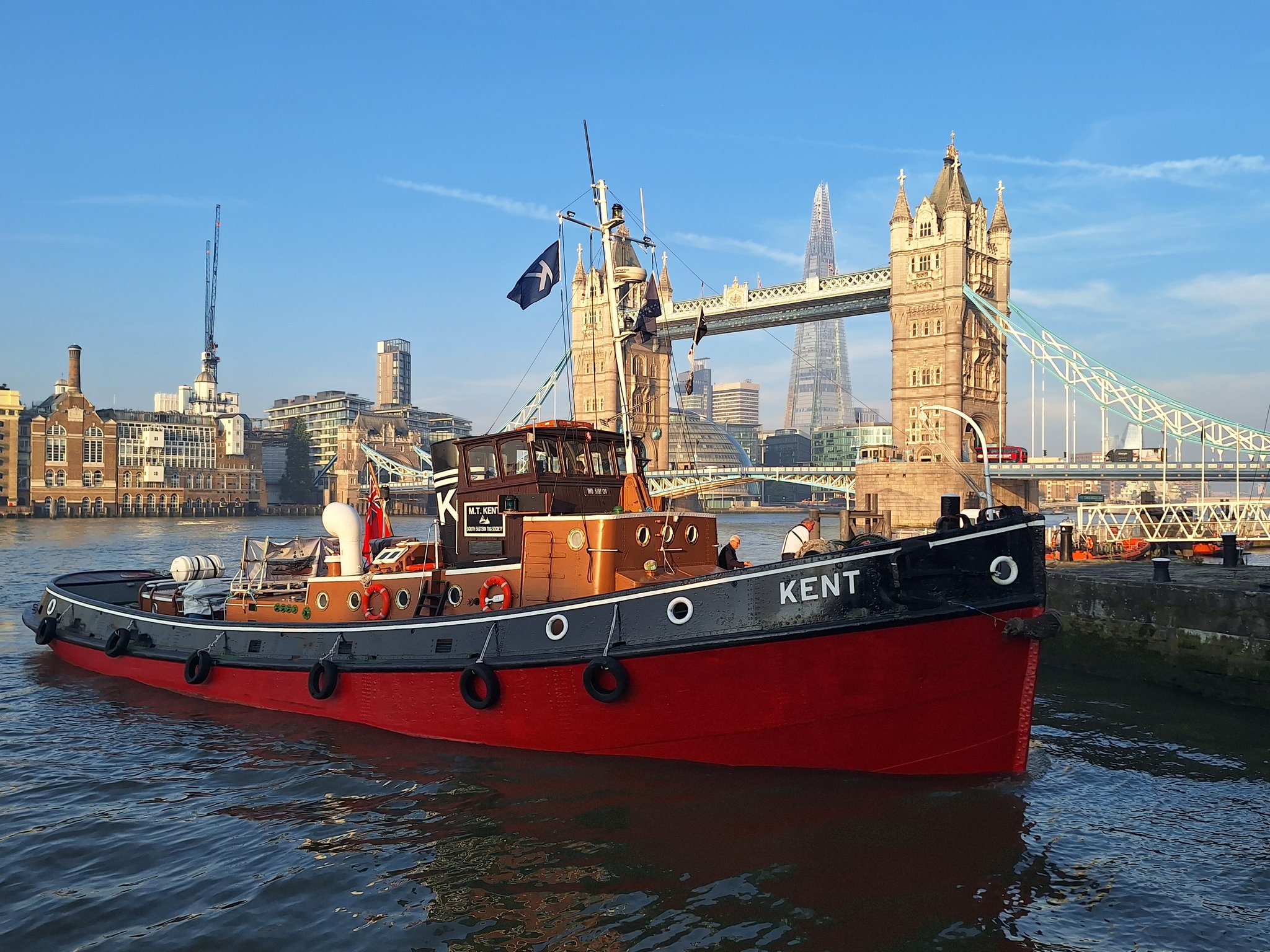
Details
Construction
Dimensions
History
The M.T. KENT was built by Richards’s Ironworks at Lowestoft for J. P. Knight of Rochester. At the time of her launch in 1948 she was the most powerful single screw harbour tug in Great Britain with diesel propulsion.
She began her working life on the Medway with ship handling at Rochester, Chatham and Sheerness but in subsequent years she was to work elsewhere in the UK, carrying out coastal tows and a host of other duties. When the British Petroleum Refinery at the Isle of Grain was commissioned it was KENT who assisted the first tanker to her berth.
Among the stranger duties carried out by the tug was assistance to the replica Viking ship now preserved in Pegwell Bay. The vessel was first exhibited around the south coast ports but it was not the ‘Vikings’ that did the long distance rowing between the different locations as believed by the general public. KENT did the hard work and discretely anchored out of sight dropping them off and waiting to take them to the next port.
KENT was finally taken out of service in 1988 and moored on the Medway at Chatham in a semi-preserved condition. In 1995 she was acquired by the Southern Eastern Tug Society for the nominal sum of £1.00 on the understanding that she would be preserved and restored. In late October that year, KENT was slipped from her moorings adjacent to the Historic Dockyard and towed to her existing berth in No. 1 Basin, Chatham Dock.
On 20 June 1998 the main engine was started for the first time since 1987 and run ahead and astern whilst secured alongside the quay. On January 18 1999 KENT finally left her moorings under her own power for a test run about the No. 1 basin. She has subsequently appeared in numerous marine publications, local newspapers and on at least four television programmes. She is one of the country’s finest preserved vessels left in working condition and one of the best examples of an early post war tug of riveted construction. Her 5 cylinder, direct reversing, British Polar Diesel Type M-45-M main engine (rated at 880 bhp) is probably the oldest of its type still running.
Significance
- What is the vessel’s ability to demonstrate history in her physical fabric?
The M.T. KENT is a single screw, riveted steel harbour tug, built in 1948 by Richards’s Ironworks at Lowestoft for J. P. Knight of Rochester. At the time of her launch, she was the most powerful single screw harbour tug in Great Britain with diesel propulsion.
M.T. KENT is almost entirely unchanged from her original design and build. Her original 5-cylinder, direct reversing, British Polar Diesel Type M-45-M main engine (rated at 880 bhp) remains in operational use and is probably the oldest of its type still running. She is one of the United Kingdom’s best preserved vessels left in working condition, and is one of the finest surviving examples of an early post war tug of riveted construction. She retains almost all her original features, including her wheelhouse and crew cabin. She also retains most of her original equipment, including auxiliary engine, general service pump, salvage pump, anchor windlass, and generator.
M.T. KENT was subject to very little adaptation during her operational life. She was taken out of service in 1987 and moored on the Medway at Chatham. No maintenance was carried out between 1987 and 1995, when an extensive restoration programme was commenced. Thirteen years of rust and corrosion were removed, the vessel thoroughly cleaned, and all surfaces repainted.
All key original features of form and function remain intact. In 1997 repairs were carried out on the main and auxiliary engines, and an inspection undertaken. In June 1998 the main engine was started for the first time since 1987 and run ahead and astern whilst secured alongside the quay. In January 1999 M.T. KENT left her moorings under her own power for a test run.
M.T. KENT is now fully operational and in immaculate condition above and below decks. She is subject to continuous inspection and routine maintenance, with a never-ending programe of cleaning and painting, and attention being given to brass work.
- What are the vessel’s associational links for which there is no physical evidence?
M.T. KENT was built for the J. P. Knight Company of Rochester and began her working life on the Medway with ship handling at Rochester, Chatham and Sheerness. When the British Petroleum Refinery at the Isle of Grain was commissioned in 1952, she assisted the first tanker, British Skill, to her berth.
Among her many duties was assisting a replica Viking ship now preserved in Pegwell Bay. This was first exhibited around south coast ports, but whilst the public were led to believe that ‘Vikings’ were undertaking long distance rowing between the various locations it was M.T. KENT that did so, discretely anchoring out of sight having dropped off the rowers at the new location.
In subsequent years she worked elsewhere in the UK, including spells at various locations in Scotland and Ireland under contract to civil engineering companies. These often involved arduous coastal and near continental tows which were undertaken without the support of either a towing winch or capstan. Towlines were streamed and shortened using a drum-head on the anchor windlass. M.T. KENT pioneered a new towage service when J.P. Knight opened their Caledonian branch at Invergordon.
M.T. KENT was recorded on the National Register of Historic Vessels in 2003 and is a member of the National Historic Fleet.
- How does the vessel’s shape or form combine and contribute to her function?
In 1995 M.T. KENT was acquired in a semi-preserved condition by the Southern Eastern Tug Society for the nominal sum of £1.00, on the understanding that she would be preserved and restored. In late October that year, she was slipped from her moorings adjacent to the Historic Dockyard and towed to her current berth at No.1 Basin, Chatham Dock, at the centre of her original working environment.
M.T. KENT was built as a heavy-duty harbour tug, and her powerful diesel engine and her thick riveted steel hull and superstructure enabled her to fulfil these duties without difficulty, making her the most powerful single screw harbour tug in Britain at the time. Her design meant that she was well-fitted for her intended purpose. She required very few modifications or adaptations during her working life.
Aesthetically, M.T. KENT has a very pleasing and readily recognisable profile. She was built for practicality rather than aesthetic appearance, but her black hull and sweeping lines resulting from her low freeboard - along with her tall black and white funnel with a large letter K in white, make her an easily recognisable vessel. She is characteristic of much UK maritime heritage in the immediate post-war period.
M.T. KENT is maintained in operational condition. In May 1999 she sailed on her first official trip from Strood to Sheerness. Since then she has attended maritime heritage events at St. Malo, Ostend, Maassluis, Rotterdam, Dover, Great Yarmouth, Harwich, Whitstable, and ports on the River Thames. She also regularly takes part in barge races and regattas around the Thames and Medway estuaries.
She was selected for the ‘Avenue of Sail’ at the Queen's Diamond Jubilee Pageant in June 2012. Accounts of M.T. KENT have subsequently been published in numerous marine publications and local newspapers, and she has been featured on at least four television programmes.
Sources:
MT KENT, Information leaflet, South Eastern Tug Society.
Paul Brown, Historic Ships: The Survivors (Stroud: Amberley Publishing, 2010): 81.
MT KENT, South Eastern Tug Society. website, https://mtkent.org.uk/history/.
Key dates
-
1948
Built by Richards Ironworks of Lowestoft for J. P. Knight of Rochester
-
1988
Taken out of service
-
1995
Acquired by the South Eastern Tug Society
-
1995-1998
Subject to a restoration programme followed by visits to marine festivals in the UK and abroad
-
2007
Awarded a Sustainability Grant of £3,000 for hull maintenance by National Historic Ships
-
2011
Vessel selected for Avenue of Sail, Queen's Diamond Jubilee Pageant on 3 June 2012.
Grants
-
April 2007
A Sustainability Grant of £3000 for hull maintenance was made from the Strategic Development Fund of National Historic Ships
Own this vessel?
If you are the owner of this vessel and would like to provide more details or updated information, please contact info@nationalhistoricships.org.uk

